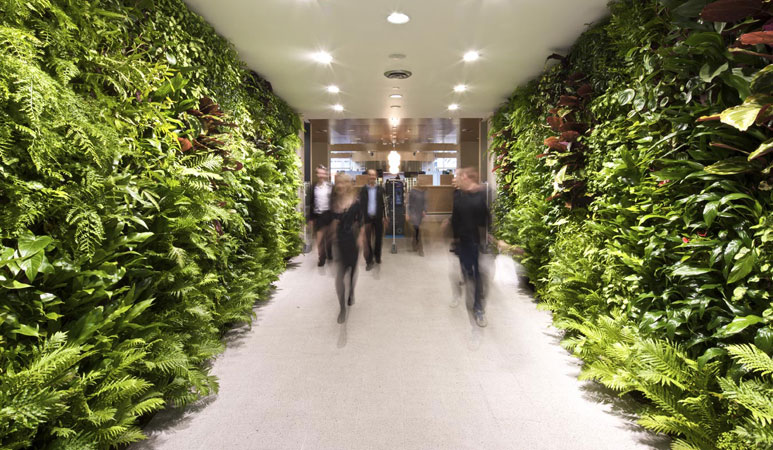Green walls are a growing global trend – but are they here to stay in Australia or just a passing fling?
Like many companies, Design Landscapes has been watching to see if green walls are going to be a lasting and growing trend, or simply a current fashion accessory. At present it appears to be both. Meanwhile Design Landscapes has been observing and testing the various construction options available for green walls within the market place to understand the suitability for various installation situations.
We initially undertook smaller internal installations to understand how the walls work as a microclimate, an experience which has been well worth the effort, though not without some surprises. Whilst reviewing the construction options it became quite apparent that one of the biggest questions to ask is 'Soil or no Soil'? As one ponders that thought it’s difficult to forget the cost of lightweight ‘soil mixes’ specifically ‘engineered’ for green walls are currently being supplied at around $300plus a cubic metre – an expensive starting point.
Perhaps we should first consider the commonalities between the various systems available in generic terms. Simplistically put, a green wall consists of a basic steel framework used to hold in place the growing media whereon plants are grown and subsequently irrigated or shall we say fertigated. Other considerations are drainage and if the installation is indoors, any lighting requirements.
Irrespective of the construction method, a frame is a frame and some engineering input will go a long way, as with the lighting and drainage systems. Without doubt the fertigation system is the heart of the operation, and hydroponics a good place to start. Having researched and dealt with the plethora of available information on hydroponics one could be forgiven to think that green walls are not so easy to construct as first thought. The decision regarding a suitable pump set, reservoir tank(s), a control system with the necessary valves, filters and a fertiliser mix is not so difficult a task to manage if you are prepared to do your homework.
The real difficulty lies with plant selection, and more importantly plant compatibility. The latter cannot be understated; as in isolation and generally speaking growing a single plant species on a small wall is not so difficult, it gets harder when the wall gets larger as micro conditions take effect and much harder if you are trying to get a variety of plant species to perform at the same level – that takes real expertise. A monoculture will do the job, and blocks of three or five species may look good, but the real challenge is to create something that speaks of nature. That is what we are trying to bring back into our homes, offices and cities. We look forward to what we hope will be an enduring form of landscape practice.
Current projects include an external green wall in Hong Kong utilising the contained soil method and a newly completed internal wall in Melbourne using the soil-less methodology.
Contact:
Michael Platt: Design Landscapes
Ph: 02 9958 9400
www.designls.com
Project Particulars:
Green Walls: Design Landscapes
Pumps: Grundfos
Valves: Burkett
Controller: Hunter
Green Walls: Design Landscapes
Pumps: Grundfos
Valves: Burkett
Controller: Hunter
Website
Send Enquiry To Design Landscapes Australia Pty Ltd


